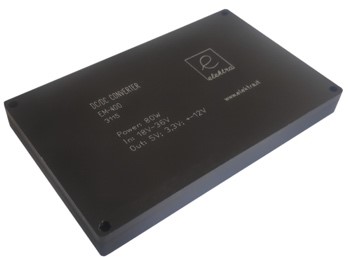
The “handling” of our converters is made optimal through the use of a special hybrid technology on a ceramic substrate (Al203) in conjunction with a robust housing milled from an aluminum block, which results in a high-power density. This technology can also be used as a brick, half brick, quarter brick, “2×2”, Dil24 and many more.
We Are Your Extended Arm in Industrial Developments
Despite the current global delivery bottlenecks, Elektra as an established family business still offers customer-specific solutions within short development times. Feel free to contact us with your specifications.
Elektra offers a wide range of DC/DC converters in the power range from 5 watts to 360 watts for industrial, telecommunications, automation technology and railway applications according to EN50155. On request, the products are also available RoHS-compliant.

DC/DC converter
EMF150
Development of a tailor-made DC/DC converter for the aircraft sector with input voltages from 16 to 51V; 5 outputs; all linear regulated to achieve a very low output ripple. power: 35 watts. Output voltages: +5,1V; +12V; +15V; +24V; -12V; 48V Plug connection